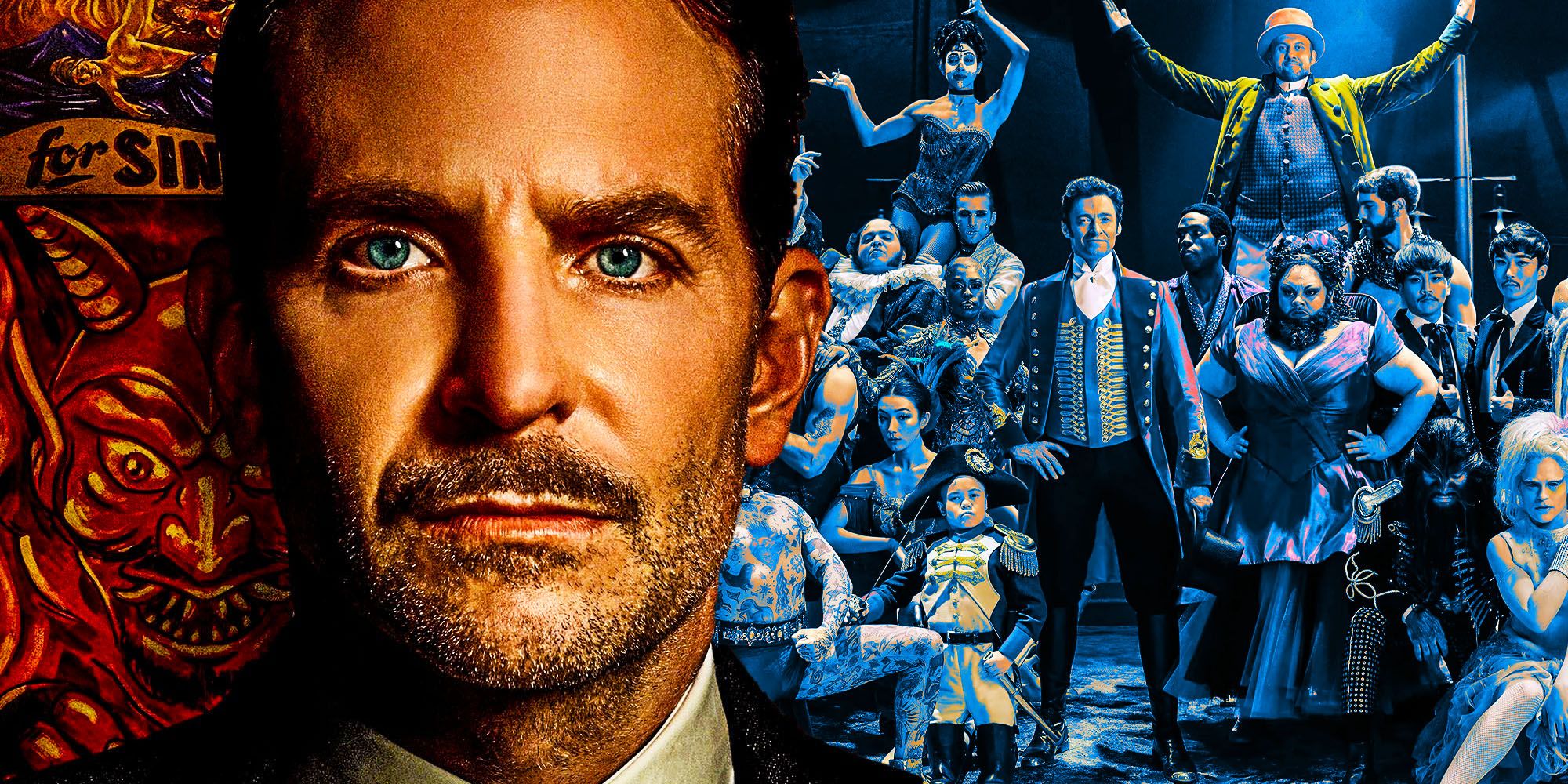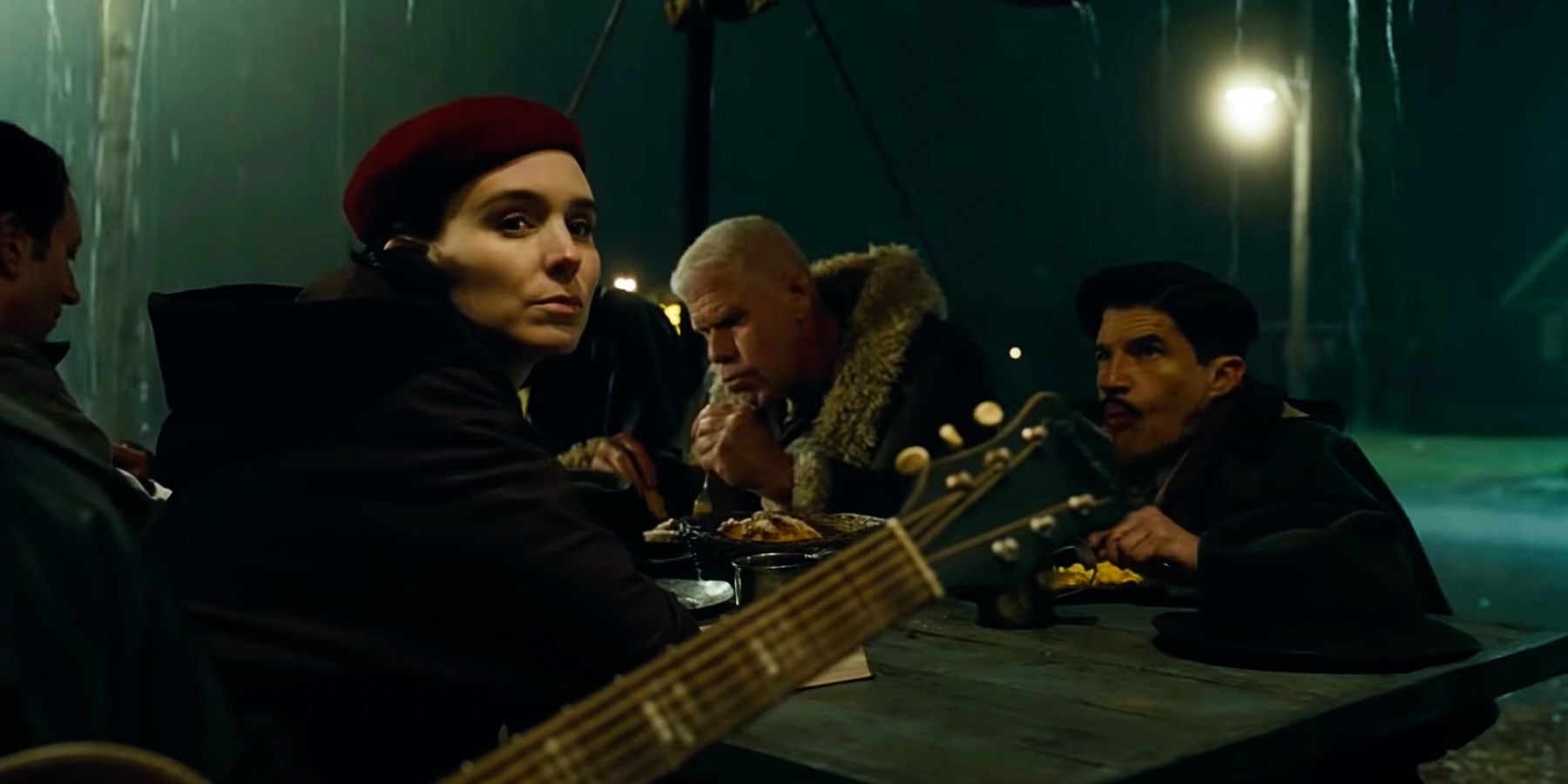Warning! SPOILERS for Nightmare Alley
Guillermo del Toro's depiction of carnival sideshows in Nightmare Alley highlights how The Greatest Showman got it wrong. The films are set in fairly different time periods, with The Greatest Showman taking place in the latter half of the 19th century, and Nightmare Alley in the late 1930s/early 1940s, but both films focus largely on circus life and the journeys of individual men who embrace it. However, The Greatest Showman's portrayal is more than a little fake, which Nightmare Alley's realism clearly illustrates.
Nightmare Alley follows the story of Stanton Carlisle (Bradley Cooper), who joins up with a carnival outfit and begins to learn mentalism from some of its veteran performers. When he turns out to have somewhat of a gift for the act, Stan ends up moving on from the carnival to bigger game, but plenty of dark twists await him by Nightmare Alley's ending. The film includes a healthy dose of Guillermo del Toro's signature dark whimsey, but the movie is ultimately a realistically grim and deeply human story about greed, fear, and the dangerous side of the human psyche. The carnival plays a significant role in illustrating all of this, even though Stan leaves it behind by the film's latter half.
This unflinching depiction of the carnival's dark reality is what separates Nightmare Alley from The Greatest Showman. While the latter film's greatest mistake was glossing over the horrors committed by P.T. Barnum's circus act, Nightmare Alley actually highlights the carnival's dingy underbelly very intentionally. It thus corrects The Greatest Showman's biggest mistake and emphasizes how the earlier film got circuses wrong.
The Greatest Showman changes P.T. Barnum's story drastically, making him a caring, enlightened individual who wants nothing more than to liberate anyone who feels like an outsider by including them in a joyous, family-friendly spectacle. In reality, however, this could hardly be farther from the truth. Barnum's "freak" show exploited and grossly mistreated countless disabled, underprivileged, and underaged people over the course of its run. While the examples are too numerous and too graphic to fully and explicitly address, suffice it to say that P.T. Barnum's circus was, by today's standards, an enormous human rights violation. The Greatest Showman addresses none of this, instead romanticizing Barnum as an almost mythological figure for the sake of its inspirational message.
While Nightmare Alley may not be a horror movie exactly, it includes a disturbingly real depiction of at least one classic carnival atrocity: the geek show. Advertised as creatures somewhere between man and beast, Nightmare Alley's geeks are actually alcoholics, often veterans, lured in with opium-laced booze to perform grotesque acts such as killing and drinking the blood of live chickens. This is Nightmare Alley's most graphic example of how carnivals exploit people, but the film also illustrates how un-glamorous the lives of all carnies are, as most are desperately down on their luck and some are downright despicable. In all of these depictions, Nightmare Alley shoots for realism rather than fantasy, and largely seems to hit the mark, especially as the film is based on a novel from 1946 which was written based on real conversations with real carnival workers.
By brutally showcasing the inhumane conditions of actual carnival sideshows, Nightmare Alley corrects at least one thing critics rightly hated about The Greatest Showman: its romanticized depiction of the carnival lifestyle. Though not a direct exposé, Nightmare Alley at least tells the truth to the real-life conditions, and through the grim fate of its protagonist, it creates a chilling empathetic link between viewer and geek that helps bring the true tragedy of the carnival to light. Following in a long tradition of controversial circus films that runs from 1932's Freaks to 2017's The Greatest Showman, Nightmare Alley finally starts to address something that earlier films have gotten wrong.


